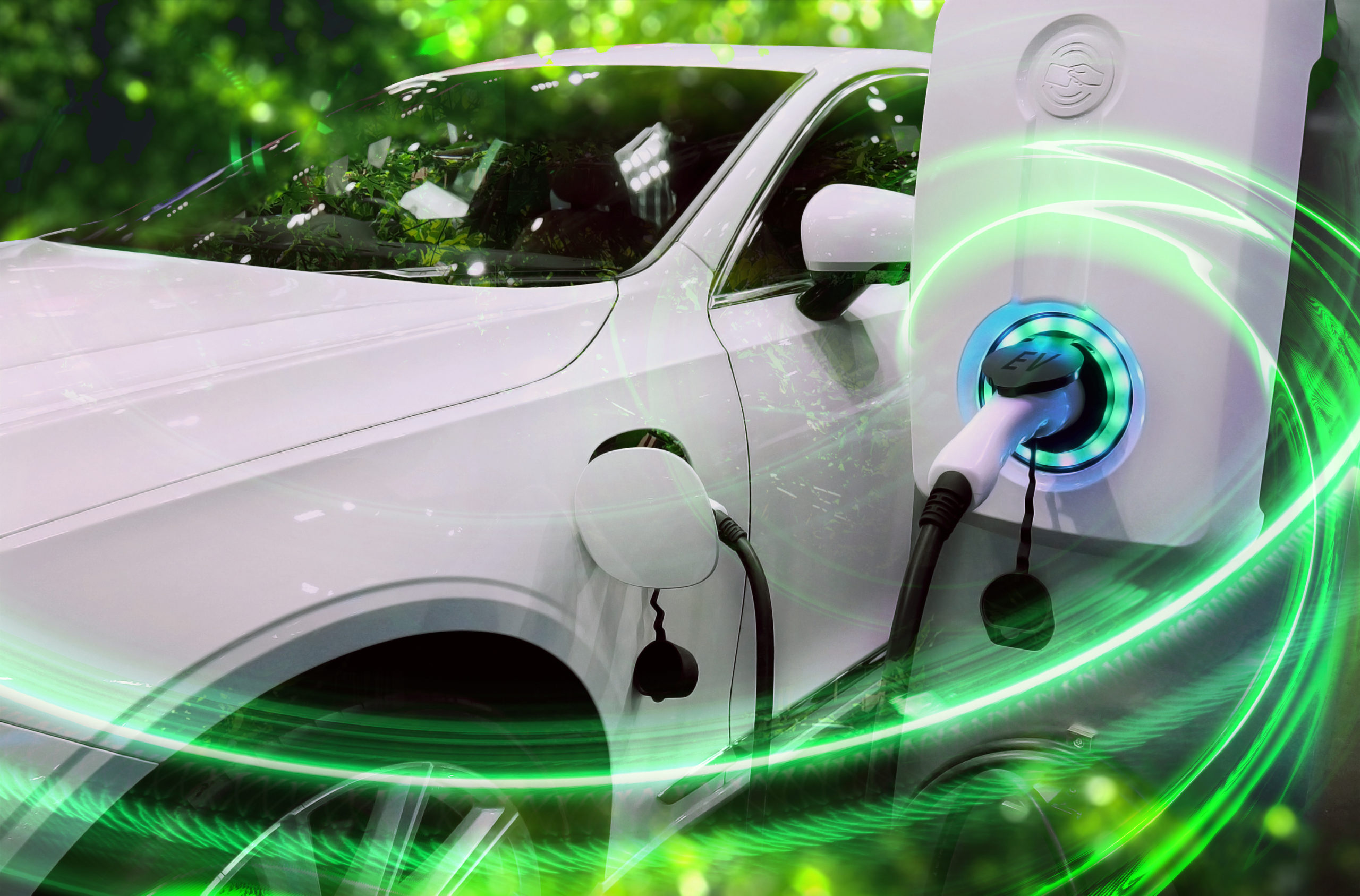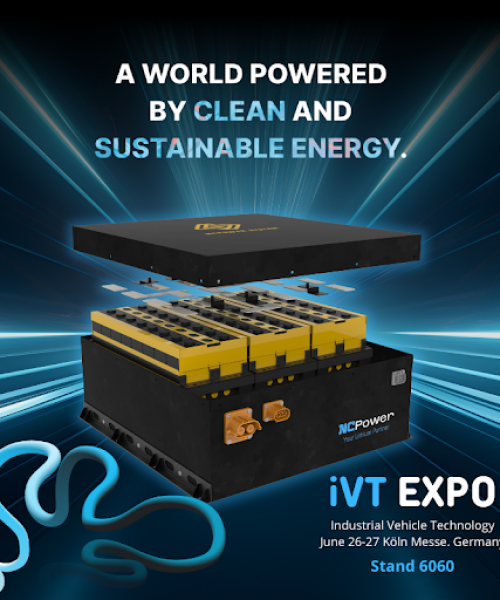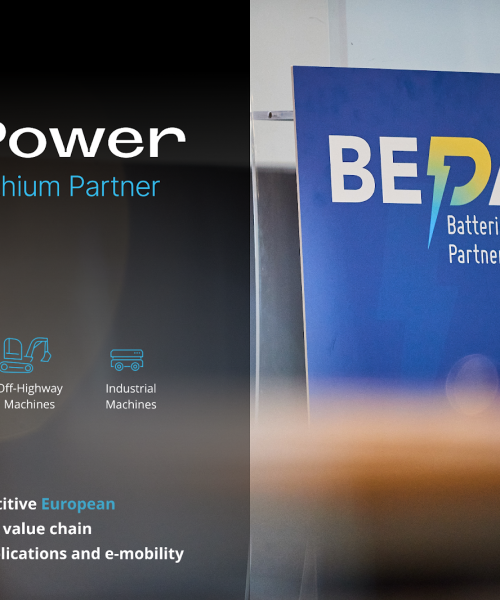The question of the best chemistry for electrifying vehicles often arises. There are different types of cells or batteries, and their advantages and disadvantages should be assessed in order to make an informed decision.
Firstly, there are lead-acid batteries. They are cheap, but not very durable and do not offer very high performance. They are also quite heavy. Another option is nickel-metal hydride batteries, which are more efficient than lead-acid batteries and are not as heavy. However, they are a bit more expensive.
Finally, within the battery types, we have lithium-ion batteries, which are the most advanced and popular today. They are lightweight, durable and offer a large amount of power. And although they require a large outlay, they offer an excellent return on investment, as well as being more environmentally friendly.
Today, lithium batteries are very popular in a wide range of applications. Initially, they were mainly used in mobile phones, computers and small tools. Today, however, more and more manufacturers of industrial machinery and electric vehicles are adopting this technology for the electric transition of their fleets. Lithium batteries are used in a variety of sectors, such as logistics, material handling, construction, aerial platforms, agriculture, airport vehicles and marine.
Choosing the right lithium battery for a vehicle has become more complex than ever, but it is even more important due to the latest European Parliament regulations that have approved a ban on the sale of petrol and diesel vehicles from 2035.
However, not all lithium batteries are the same. There are many factors to consider in finding the right battery for a specific application. There are several types of lithium batteries available on the market. In addition, apart from voltage, there are the dimensions of a lithium battery, and a complex process that includes research and development, technical testing and, most importantly, choosing the right chemistry to meet the needs of the vehicle.
The six most commonly used lithium-based chemistries and their characteristics
The six most commonly used lithium-based chemistries are:
- Lithium-Cobalt-Oxide (LiCoO2)
- Lithium-manganese-oxide (LiMn2O4)
- Lithium-ferro-phosphate (LiFePO4)
- Nickel-Manganese-Cobalt (LiNixMnyCozO2)
- Nickel-Cobalt-Aluminium (LiNiCoAlO2)
- Lithium Titanate (Li4Ti5O12)
We will now take a closer look at each of them, their advantages and disadvantages.
1. Composition and characteristics of lithium batteries with LCO chemistry: Lithium - Cobalt - Oxide (LiCoO 2 )
Lithium batteries with LCO (Lithium Cobalt Oxide) chemistry consist of a cobalt oxide cathode and a graphite anode. The cathode chemistry is LiCoO2 and the electrolyte used is a solution of lithium salts in an organic solvent.
Batteries made with this LCO chemistry have a high energy density and long life, making them suitable for use in portable devices such as mobile phones and laptops. However, they have a tendency to overheat and can be unstable if improperly charged or subjected to high temperatures, which can lead to electrolyte leakage and battery explosion.
In addition, cobalt is an expensive and scarce material, which makes lithium batteries with LCO chemistry more expensive than other options.
- Nominal voltage: 3.6 V.
- Gravimetric density: 200 Wh/Kg
- Energy density: 400 Wh/l
- Full life cycles: 500 - 1000
- Discharge rate: 1C
2. Composition and characteristics of lithium batteries with LMO chemistry: Lithium - Manganese - Ossido (LiMn 2 O 4 )
Lithium batteries with LMO (Lithium Manganese Oxide) chemistry have a manganese oxide cathode and a graphite anode. The cathode chemistry is LiMn2O4 and the electrolyte used is a solution of lithium salts in an organic solvent. The main characteristic of LMO batteries is the ability to supply a lot of energy in a short time.
These batteries have a high discharge capacity, long life and are less prone to overheating than lithium batteries with LCO chemistry. In addition, manganese is a less expensive and more abundant material than cobalt, which makes lithium batteries with LMO chemistry more economical and environmentally friendly.
However, these batteries have a lower energy density than lithium batteries with LCO chemistry and may suffer from long-term cathode degradation if charged and discharged at high currents or temperatures.
They are often used for electric bicycles, in the world of gardening, in medical equipment and power tools, such as drills and screwdrivers.
LMO batteries have superior thermal stability compared to chemical LCO batteries, but have limited capacity, which is lower than cobalt-based systems.
- Nominal voltage: 3.7 V.
- Specific energy: 150 Wh/Kg
- Energy density: 350 Wh/l
- Full life cycles: 300 - 700
- Discharge rate: 1C, 10C
3. Composition and characteristics of lithium batteries with LFP chemistry: Lithium - Ferro - Phosphate (LiFePO4)
Lithium batteries with LFP (Lithium Ferro Phosphate) chemistry have a cathode composed of lithium iron phosphate, a graphite anode and an electrolyte based on lithium salts.
These batteries are known for their high safety, as they do not contain flammable materials such as the cobalt used in lithium batteries with LCO chemistry. In addition, lithium batteries with LFP chemistry are more resistant to high temperatures and overcharging than other lithium battery chemistries.
This chemistry is commonly used in applications requiring high reliability and safety. We are therefore talking about a very wide world, ranging from automation to robotics, logistics, construction, agriculture, marine, electric vehicles, airport vehicles, aerial platforms and special vehicles.
Batteries with LFP chemistry are, in fact, the safer and more stable currently on the market. In addition, they are available at large capacity formatsThe system is designed to meet the requirements of industrial systems, without the need to connect many small cells in parallel, which would reduce stability and compromise safety.
Batteries with LFP chemistry have an extended lifetime and can last more than 3,500 cycles. Moreover, they could exceed 4,000 cycles if a suitable BMS system is integrated to monitor them. It is estimated that they could even reach 6,000 cycles in the future.
However, it is important to note that the life cycles do not indicate the complete end of the battery, as the useful life of a vehicle battery is considered to be exhausted when only 80% of its original capacity remains. Despite this, the battery may still be useful for other applications, such as energy storage.
Another important advantage of LFP batteries is their flat discharge curve, which means that the battery voltage remains constant during discharge. Therefore, it can be seen that the voltage from 100% to 0% is very similar and this is a fundamental fact.
This feature allows machines and industrial vehicles to perform consistently and uniformly from the beginning to the end of discharge. In addition to their durability and stability, LFP batteries are known to be very safe, making them suitable for use in vehicles and other industrial applications.
- Nominal voltage: 3.2 V.
- Gravimetric density: 170 Wh/Kg
- Energy density: 350 Wh/l
- Full life cycles: > 4000
- Discharge rate: 1C/3C

The flat curve of LFP chemistry, which allows constant performance during battery discharge, can make it difficult to accurately determine the state of charge. However, with a good BMS system, this can be overcome to provide a correct state of charge and effectively balance the battery.
Moreover, a major advantage of LFP chemistry is the complete absence of cobalt, a toxic and environmentally harmful material. Furthermore, while the energy density of LFP chemistry was previously low, it has now increased significantly, which has generated a great deal of interest in vehicle electrification. In fact, further increases in gravimetric density are already expected in the coming years to 220/230 Wh/Kg.
Tesla and other automakers are reintroducing LFP chemistry because of its higher level of safety and lower cost compared to other chemistries used in high-performance vehicles.
Energy density is expected to continue to increase in the near future, making LFP chemistry an increasingly attractive option for energy storage and vehicle electrification.
4. Composition and characteristics of lithium batteries with NMC chemistry: Nickel - Manganese - Cobalt (LiNixMnyCozO2)
Lithium batteries with NMC (Nickel-Manganese-Cobalt) chemistry are composed of three main elements: nickel, manganese and cobalt, which are used in different proportions depending on the cell type.
In the automotive sector, lithium batteries with NMC chemistry are still the most common and widely used. These batteries offer a very high specific energy, which can reach 220-240 Wh/kg. This is a great competitive advantage for vehicles, as it allows them to store a lot of energy with reduced weight and volume, which means that more energy can be installed in the vehicle compared to other lithium battery technologies.
There are several types of NMC chemistry:
The number following the abbreviation NMC indicates the proportion of these elements used for the cathode. For example, NMC 811 cells have a high concentration of nickel and a low content of manganese and cobalt, while NMC 111 cells have an equal proportion of each element.
- NMC 111 (Nickel 33,3% - Manganese 33,3% - Cobalt 33,3%)
- NMC 622 (Nickel 60% - Manganese 20% - Cobalt 20%)
- NMC 811 (Nickel 80% - Manganese 10% - Cobalt 10%)
- Nominal voltage: 3.6 V.
- Gravimetric density: 220 Wh/Kg
- Energy density: 500 Wh/l
- Full life cycles: 2,000
- Discharge rate: 2C/3C

The abbreviation NMC is accompanied by three numbers indicating the amount of elements used for the cathode. The latest version, NMC 811, has a high nickel content and a low manganese and cobalt content, resulting in a higher energy density at a lower cost. Although the goal is to minimise cobalt in NMC technology, this element is still essential for system stability and battery durability.
However, there are companies researching innovative new technologies, such as Svolt, which has already developed the first completely cobalt-free NMX cell.
5. Composition and characteristics of lithium batteries with NCA: Nickel - Cobalt - Aluminium (LiNiCoAIO2)
Lithium batteries with NCA chemistry use a mixture of nickel, cobalt and aluminium as the cathode, represented by the chemical formula LiNiCoAIO2. This mixture provides high energy density and long battery life. Nickel provides structural stability, while cobalt and aluminium increase the energy density.
In addition to NMCs, batteries with NCA chemistry are also used in the automotive industry.
Lithium batteries with NCA chemistry have a high energy density that can reach 250-300 Wh/kg, although they have a slightly lower safety level than NMC batteries.
They are composed primarily of nickel, with low cobalt and aluminium content, making them similar in structure to NMC 811 cells. To balance energy density with safety and stability, NCA batteries are often mixed with NMC chemicals.
By mixing the two chemicals, a battery with a reasonably high energy density and an adequate level of safety and stability can be obtained.
- Nominal voltage 3.6 V
- Gravimetric density: 250 Wh/Kg
- Energy density: 550 Wh/l
- Full life cycles: 1,000
- Discharge rate: 2C/3C
6. Composition and characteristics of lithium batteries with LTO chemistry: Lithium titanate (Li4Ti5O12)
This is a battery technology that is not very well known, but seems to have great potential in terms of lifetime, due to its low degradation due to low internal voltages and the absence of mechanical stress. This makes it ideal for use in heavy-duty machines and vehicles.
However, it has two major weaknesses:
- Low energy density (177Wh/l) and gravimetric levels (60-70 Wh/kg) as well as a lower nominal voltage of 2.4V or 2.8V: this means that more elements are needed in series to achieve the desired battery voltage.
- Their cost is currently very high, which is reflected in the low number of LTO cell producers worldwide, probably due to the low volumes currently required by the market.
That said, it is a type of vehicle electrification chemistry with some advantages. In addition to its long service life, LTO technology also has a high capacity to operate over a wide temperature range. In addition, it can be charged and discharged quickly with a high current rate compared to its rated capacity (high C-Rate).
This technology is particularly suitable for applications that require intensive and continuous use, such as AGV (automated guided vehicle) machines. For example, a fleet of autonomous forklifts operating 24/7 would benefit from the use of LTO batteries, which can be charged quickly to reduce downtime and increase plant efficiency.
- Nominal voltage 2.4 V
- Gravimetric density: 70 Wh/Kg
- Energy density: 177 Wh/l
- Complete life cycles: 15,000 - 20,000
- Discharge rate: 4C/8C
From theory to practice: using the right lithium chemistry for the right application
Each of the 6 main types of lithium-based chemistries currently used in electrification are useful and high-performing, but we should not think of them as competing with each other. On the contrary, each lithium chemistry has its advantages and performs best in different application areas.
This diagram is very illustrative in order to see the differences between each type of battery chemistry.
- The specific energy or gravimetric density measures how much energy the battery can store in relation to its weight.
- Safety refers to how safe the battery is in terms of the thermal stability of its components.
- The C-Rate indicates the battery's ability to charge and discharge energy, which is related to its ability to generate energy.
- Life cycle refers to the number of times the battery can be discharged and recharged before its capacity is reduced to 80% of the residual capacity.
- Cost refers to the price of the battery and is an important factor to consider in choosing the right battery for a given application.
How to choose the right type of lithium chemistry?
At this point, let us try to explain in detail why to choose one product or another according to each case and application.
NMC and NCA batteries for the automotive sector
NMC and NCA batteries are widely used in the automotive sector due to their high energy density, which allows them to provide a large amount of energy in a small space.
In electric mobility, energy density, gravimetric density and specific power are key elements, and charging speed and high acceleration powers are considered focal points, especially in premium models.
In this sector, other features such as long life cycles are not essential, as they are not necessary. In the case of an automobile, it is not likely to make many cycles in a single day, and generally only 20-30% of the load is used in a day.
Therefore, battery life cycles with NMC chemistry do not exceed 2000, and with NCA chemistry, life cycles reach 1000.
LFP and LTO batteries for the industrial sector
In different sectors, such as agriculture, industry and electrification of special vehicles, it is more appropriate to use batteries with chemistries such as LFP and LTO instead of NMC and NCA. This is because in these sectors, safety, reliability and lifetime are more important than energy density and performance.
In industry, for example, space is not an issue and safety is a priority, especially in highly cyclical applications that stress the battery.
In these cases, it is preferable to have a battery that takes up a little more space, but ensures optimal safety and has a longer service life. Moreover, in stationary applications, energy density is not as important as the cost and life cycles of the battery.
LCO and LMO batteries for small mobile applications
If you need a battery for mobile tools and applications that is very small, then the most important thing is that it is lightweight so as not to affect the overall performance of the application due to excessive weight. In this case, battery chemistries such as LCO and LMO are ideal as they offer high power density in a small, lightweight package.
Although these chemistries have a shorter shelf life and may be more risky in terms of safety due to their small size, this is accepted to ensure that the product is competitive in the market.
BMS optimises the characteristics of the chosen chemistry
All this information shows that the diagrams can be useful to understand the general characteristics of each battery chemistry, but it must be remembered that the data is indicative and that technology and innovation are constantly evolving.
Therefore, it is important to keep up to date and rely on experienced manufacturers to design batteries that meet the specific needs of the application.
Moreover, chemistry is not the only factor that affects battery performance. The Battery Management System (BMS) is also important, as it is able to make the most of the characteristics of the chosen chemistry and ensure consistent performance over time.
A BMS, or Battery Management System, is a set of electronic devices and software that manages and monitors the operation of a rechargeable battery. The BMS controls and monitors various battery parameters, such as temperature, voltage and current, and protects the battery from overcharging, over-discharging, overheating, short circuits and other events that could damage the battery or reduce its life.
Such systems can also load balance the battery cells to ensure that they are all working together optimally.
Finally, an intelligent BMS can analyse battery data and adjust battery behaviour to maximise performance and efficiency based on the specific needs of the application.






